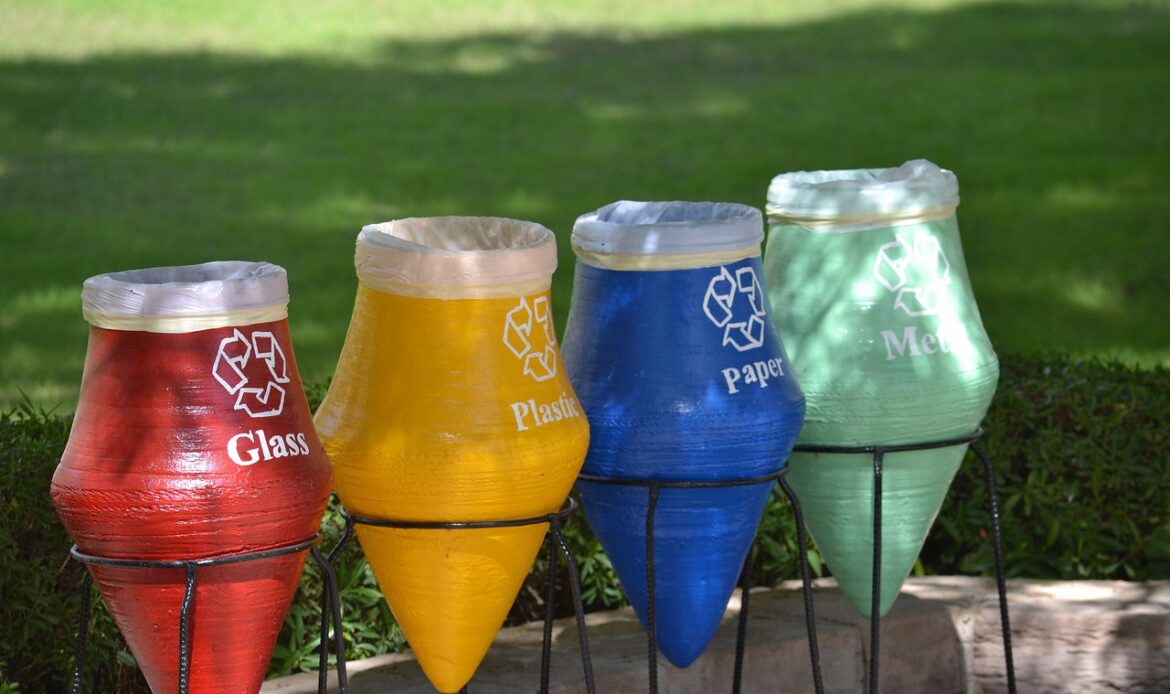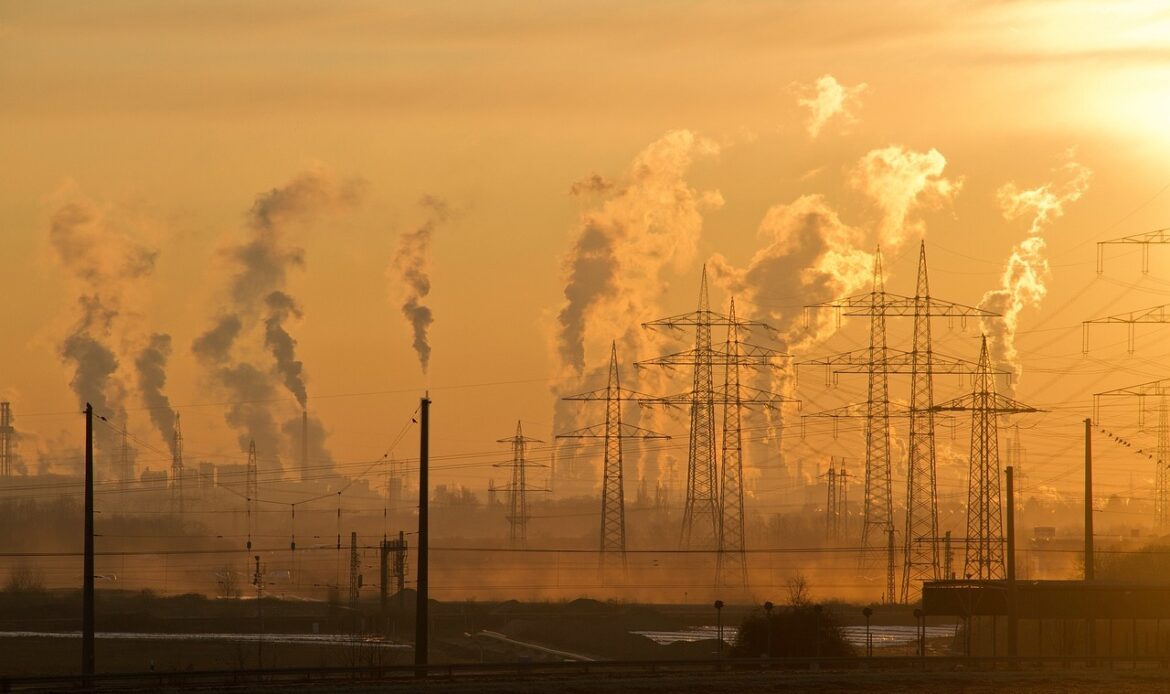Businesses and companies are often amongst the largest emitters of greenhouse gases, with masses of CO2 emissions set off from various industrial processes, elements of the supply chain and employee travel to name a few—at times leading to dangerously high levels of total emissions.
The environmental impact of carbon dioxide and greenhouse gases, to a detrimental degree, has enforced shifts in traditional structures. Today, there are countless methods that businesses of any scale can employ to reduce their carbon footprint and help in the mission to net zero.
Green energy providers now operate sustainably, offering ways to counter emissions and avoid finite sources, and businesses can now choose from heaps of eco-friendly systems to replace outdated, high-emission practices, such as utilising renewable energy sources to reduce carbon emissions and minimise their footprint.
This blog covers innovative ways for businesses to lower greenhouse gas emissions, uphold forward-thinking practices, enhance their green presence and ensure a sustainable future.
1. Renewable Energy Adoption

All businesses should be looking to pull away from finite fossil fuels, which speed up climate change and intensify global warming. Businesses should look to purchase and install solar panels where possible, which, after an initial hefty cost, likely pays itself off over some years. Investing in wind power can also generate heaps of renewable energy.
Primarily in the US, RECs (Renewable Energy Certificates) allow businesses to claim that some of their electricity consumption is from renewables, and REGOs operate similarly in Europe and the UK.
More commonly used in the UK, green tariffs allow businesses to buy renewable energy directly, offered by most UK energy suppliers allowing for a streamlined process.
2. Carbon Offsetting
Carbon accounting will be rolling out in more and more legislation, meaning businesses have to accurately record and account for their carbon emissions, with transparency as to how these are being lowered if required. At Gaia, we have carbon accountancy software so that businesses can do exactly this.
Businesses can record and measure their exact carbon emissions, and aim to partially or entirely offset this through carbon offsetting.
A prime example of this is funding reforestation projects; boosting natural carbon sinks over time to offset business emissions. Other great examples are funding for renewable energy or methane capture projects.
3. Waste Reduction
For the majority of businesses, producing some degree of waste is inescapable. In some sectors, this can be dangerously high, such as fast fashion, food and beverage or construction and demolition.
Many steps can be taken to reduce waste, from minimising or eliminating single-use plastics business-wide to optimising the entire production process with lean manufacturing or efficient methods.
Adopting digitality where possible supercharges productivity, such as in documentation or communications, while eliminating the need for harmful paper waste.
Dutiful businesses should regularly measure their waste outputs, to identify surges and accurately monitor business-wide reductions in waste.
4. Recycling Programs

Recycling is a way to make sure that less goes to waste or landfill, instead giving materials and items a second life. Recycling can be achieved in many ways, from large scale to small scale.
In-house recycling should be the standard, with stations for recycling paper, plastic, metals and electronics. Employees should be encouraged and incentivized to recycle and utilise these stations.
Industrial waste, by-products and scrap materials should be properly recycled where possible, such as by partnering with recycling companies.
Recycling efforts can be tracked and managed, to ensure targets are met and waste problems do not worsen.
This combats the need for energy-intensive production processes and lowers emissions from manufacturing as well as waste disposal systems.
5. Energy Efficiency Improvements
Where possible, outdated machines and equipment should be replaced with energy-efficient appliances, which can, in turn, save money to run.
Energy outputs and levels should be monitored and managed, identifying ways to improve. Energy management systems can be utilised to streamline this process.
Simple swaps like automatic lights and equipment that turns off to preserve power can be bought.
Improving HVAC (heating, ventilation and air conditioning) systems which usually remain on can hugely save energy. Advanced controls such as smart thermostats can optimise performance, prevent energy losses and reduce loads on the system.
This lowers emissions by reducing energy consumption and decreasing reliance on fossil fuels and power generation.
6. Sustainable Supply Chain Management
Supply chains can be managed in a way that best lowers greenhouse gas emissions. Sourcing locally reduces emissions from transport, which in the long term can save masses of emissions depending on a company’s age.
Green suppliers should be utilised, who strictly practise forward-thinking and sustainable operations.
Emissions caused by any cog in the supply chain should be monitored, tracked and reported, as a way to identify ways to reduce emissions where needed and identify the biggest contributors.
7. Electrification of Transport

All vehicles used by a business, such as those delivering products, transporting staff or providing services, should be swapped to electric vehicles to lower greenhouse gas emissions. Compared to traditional combustion vehicles they produce zero tailpipe emissions, and tend to use electricity from renewable, cleaner sources.
EV charging stations across business spaces encourage employee use of EVs, and similarly, bike-friendly equipment such as bike racks can steer staff away from high-polluting traditional vehicles.
Encouraging employees to use public transport, such as with passes or schemes, is another way to steer away from fossil fuels. In the same vein, car-pooling schemes can mean that 5 staff travel in one area as opposed to driving 5 separate cars on a similar journey.
8. Green Building Practices
As technology advances, methods of development, building and construction are being built on inherently sustainable principles that aim to aid the environment more than they harm it. When aiming to reduce greenhouse gas emissions, businesses should seek sustainable practices to ensure they are contributing positively in development.
Materials like steel and traditional concrete lead to high emissions while depleting resources. Poor insulation causes excessive energy consumption, heating and cooling.
On the other hand, recycled and sustainable materials are a much greener choice, such as reclaimed wood or bamboo. Combining solar panels and green roofs while thoroughly insulting buildings leads to a lower business carbon footprint as much greener and forward-thinking choices.
9. Telecommuting Policies
Telecommuting is the hybrid work model where staff work some days in the office and some days from home, reducing emissions from commuting while still maintaining an engaged and productive work schedule.
This can be incentivised by having specific in-office days where staff are encouraged to work together in person. Training could also be provided so employees can confidently make the most out of working from home and maximising productivity.
A hybrid work model expands geographical opportunities for hiring new staff, as those farther away are more inclined to a longer commute on a couple or few days a week.
10. Reducing Business Travel
There is a substantial difference between a short-haul flight for a face-to-face meeting simply for the sake of being in person and hopping onto a video meeting with one click, while largely to the same effect.
Virtual meetings, where possible, allow businesses to outwardly present their lower, conscious carbon footprints. In contrast, businesses that frequently fly their staff must effectively offset their emissions to not risk disrupting a harmonious public image.
Examples of this are rewetting projects, re/deforestation projects, off-shore wind farm projects, or funding into any nature-boosting schemes to the degree that travel emissions are being met or over-exceeded.
11. Implementing Carbon Capture Technologies
Investing in carbon capture tech is a way for businesses to lower the emissions of energy production from industrial processes on a large scale.
An example of the tech can separate CO2 from the other gases, such as by using chemical reactions or filters, and then capture it. It is then compressed into liquid and transported to be stored, where it gets injected into deep geological formations.
It is stored permanently, thousands of metres below the surface and under impermeable rock layers—how natural oil and gas have been stored naturally for millions of years.
This helps businesses meet ESG criteria, offset their emissions and align with green emission targets.
12. Optimising Logistics
Logistics, covering a broad spectrum of operations, can be optimised through routes of management to lower emissions in many ways.
For example, transportation management routes can be optimised, reducing fuel consumption with shorter routes.
Management of inventory can administer local sourcing, calling for less travel emissions.
Partnering with green logistic providers has many methods of operating sustainability fit for a large number of businesses, making it straightforward to do so.
It would also be good practice to monitor the emissions from different logistic operations, to report and ensure that they are being lowered and consistently meet the green standard.
13. Promoting Public Transportation

As briefly covered, public transport is a fantastic way to reduce emissions. A bus full of 49 people potentially stops 49 cars from driving back and forth, releasing harmful fumes and gases, every day. The long-term impacts of this are immense for lowering greenhouse gas emissions.
Businesses can advocate for improved public transport access or bend working schedules to accommodate public transport schedules, reducing the risk of blockages at peak times and making it a more enticing option.
Employees should be incentivised to use buses and trains and educated regarding the significant environmental benefits of doing so on a regular basis.
14. Adopting Circular Economy Practices
Circular economy practices are methods and systems designed to reuse resources through repairing, recycling or sustainable production methods, minimising waste.
A great example of this is IKEA, with replaceable parts in furniture to swap out if faulty rather than discarding the entire piece, lowering the need for energy-intensive manufacturing processes.
Patagonia’s trade-in program encourages their customers to return clothes rather than dispose of them, reusing them or restoring quality for resale.
Another example is Too Good To Go, allowing restaurants to dispose of their excess or unneeded stock at very low prices to consumers who collect it, saving it from going to waste.
15. Using Sustainable Suppliers & Materials
To lower the emissions of a business, they should source sustainable materials which offer good recycling value, preventing masses of waste from landfill and those with low impacts on the environment.
A business supporting suppliers who buy purely fair trade and ethically sourced products is a great way to reduce emissions and allows for a mutual commitment to sustainability and mitigating climate change.
Outlining a clear code of conduct that suppliers must adhere to is a simple tactic to ensure that all business materials, from tiny to huge, are ethically sourced and will not contribute heavily to a business’s greenhouse gas emissions.
16. Switching to Online Meetings

Online meetings are a fantastic way to lower business emissions. A single online meeting can mean that 500 employees don’t have to drive or commute to work, potentially preventing substantial amounts of emissions.
Businesses can invest in high-quality video conferencing technology, providing employees with at-home tech to join meetings from home with ease. Utilise technical tools, CRMs and communication platforms such as Slack that aid seamless digital communication between employees.
Make employee training virtual where applicable. Utilise online tools, tech and resources to create interactive learning environments that engage and educate employees on the ways of the business while contributing to emission reductions.
17. Implementing Water-Saving Measures
There are many ways to cut down on water usage, from weather-smart irrigation watering systems to taps and toilets that function on a lower flow.
Water-saving measures minimise wastewater, which calls for less need for energy-consuming wastewater treatment.
Many devices and appliances have water-saving models, from shower heads to washing machines utilising impellers and agitators.
Water-efficient cooling systems, such as closed-loop systems, recirculate the water instead of discharging them which go on to save heaps of water while decreasing energy use and emissions.
Water usage and wastage should also be carefully monitored to track targets and maintain lower emission levels.
18. Installing Energy-Efficient Lighting
There are many benefits, including the reduction of greenhouse gas emissions, to installing lighting that is energy efficient.
These are designed smarter and safer, such as LEDs, which create less heat than traditional lighting. This is safer to use and also lessens the demand for air conditioning.
These bulbs tend to last longer, lessening the need for disposing of the product and replacing it, enhancing transport and manufacturing emissions.
Smarter, modern light systems can bring more control such as with motion sensors and dimming controls. To reduce emissions, it’s advisable to replace outdated, constantly overhead bulbs with advanced, energy-efficient technologies.
19. Reducing Meat Consumption in Cafeterias
Plant-based diets tend to require lower levels of energy than meat, lessening the problematic number of emissions from food production processes.
Encouraging veggie and vegan options in company cafeterias is a fantastic way to reduce emissions. It may trigger lifestyle changes in employees that can make immense impacts on the climate over periods of life.
Carbon-sequestering forests can be preserved when we shift to a plant-based lifestyle, reducing the need for livestock to graze and feed. This also lowers emissions from transporting cattle, livestock or meat around the world.
Permanently offering a selection of plant-based and vegetarian meals with locally sourced ingredients is a great way to incentivize staff to eat healthier and be conscious of emission contributions.
20. Encouraging Carpooling Among Employees
Though EVs are gaining popularity, traditional, fossil-fuel-burning vehicles remain overwhelmingly common.
These vehicles continuously emit pollutants into the atmosphere and clog up the air with fumes, intensifying global warming with pollution.
Encouraging carpooling within a business can make a tremendous difference; if even one employee decides to share rides, it can make a large impact over the span of a work life.
Doing this across the board is a fantastic way to lower fumes and emissions from vehicles plus decrease oil and petrol consumption.
The bigger a business, the greater the opportunities for carpooling. It’s simple to set up a system to optimise geographic routes and maximise emission reductions.
21. Implementing Smart Grid Technologies
Smart grids allow for efficient energy distribution, resulting in lower carbon intensities of energy consumption. They integrate heavily with renewable sources like solar and wind, removing dependencies on finite fossil fuels that exacerbate global warming.
Smart grids can also store energy, utilising the excess generated off-peak to use at peak demand. It fosters a connection with the grid, making changes to cooling, heating and lighting depending on the conditions of the grid.
Their technology offers real-time data on the business’s energy consumption status, overall lowering emissions by identifying issues and creating targets.
More Information
https://www.epa.gov/ghgemissions/sources-greenhouse-gas-emissions
https://www.nationalgrid.com/stories/energy-explained/what-are-greenhouse-gases
https://ourworldindata.org/greenhouse-gas-emissions
https://www.nationalgeographic.com/environment/article/greenhouse-gases

